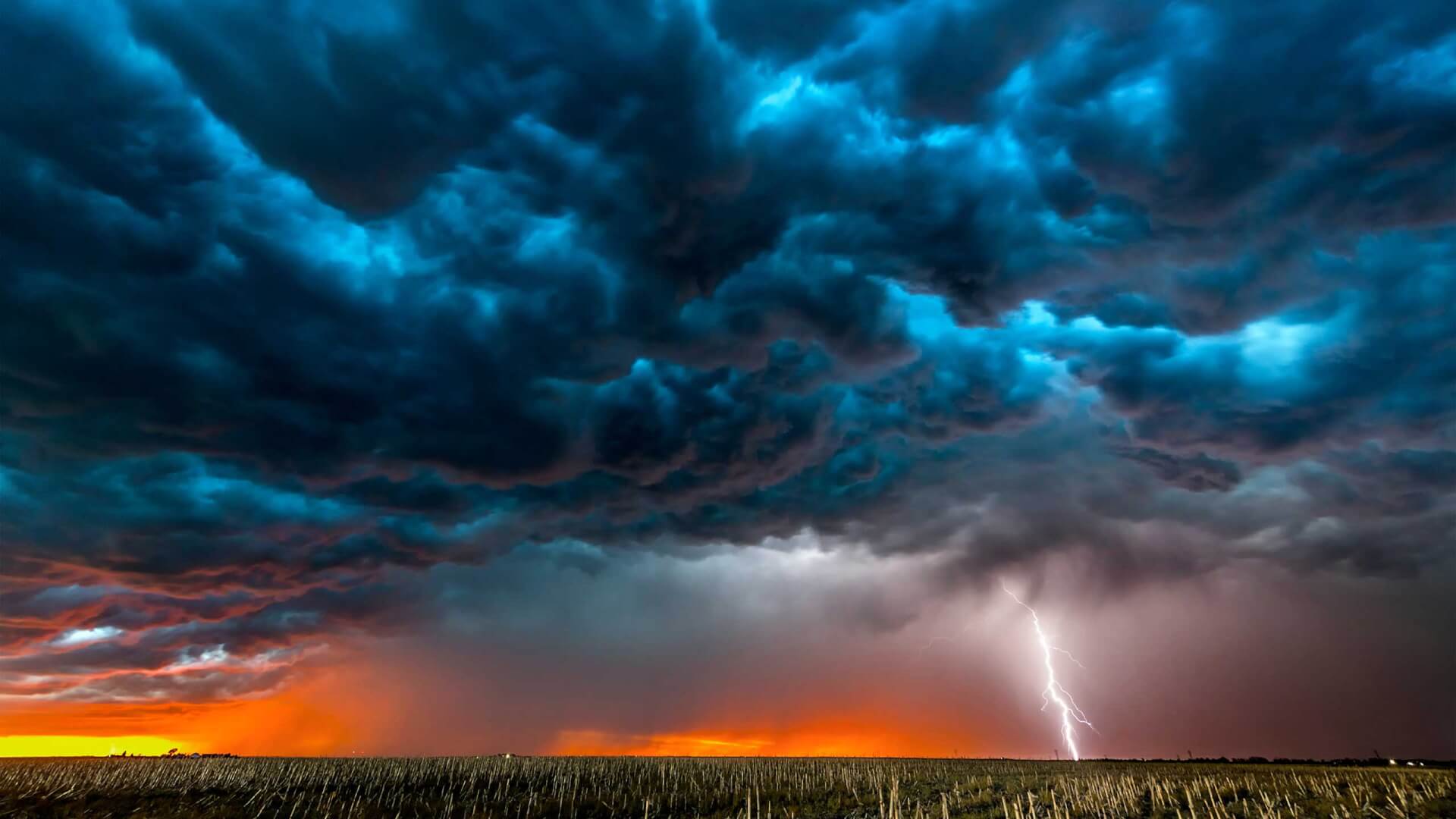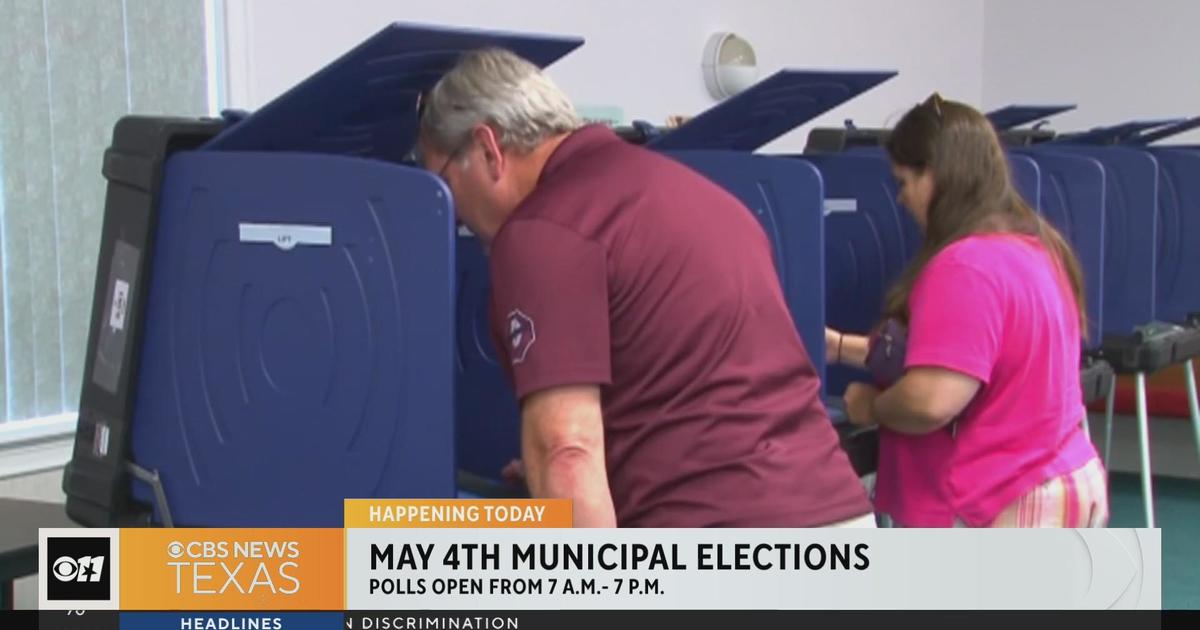Texas
Texas Hail(ed) 2023 a Record-Breaking Year for Insured Losses

How severe storms in Texas and population growth are driving hail damage
Severe convective storms — also known as severe thunderstorms — caused tens of billions of dollars of insured losses across the U.S. in 2023.
Tornadoes, straight-line winds (including derechos) and hail are the damage-causing agents of severe thunderstorms, but it was the latter that dominated the loss landscape in 2023.
Hail of at least one inch in diameter battered more than 10 million homes across the U.S. Two million of those homes were in Texas alone.
Historically, risk managers have considered severe thunderstorms a secondary peril given the high-frequency but low-severity nature of these events. However, hail is quickly becoming an expensive peril that should be modeled with the same scrutiny as the “big ones” like hurricanes and earthquakes.
In 2023 there were 141 days with large hail (greater than two inches), which is more days than any year since 2003. Insured loss figures have also been increasing. This significant increase is the result of two interrelated factors: climate patterns and the increasing scale of homes.
Understand 2024 Severe Convective Storm Season Risk
2024 SCS Risk Report
Does Changing Weather Lead to Texas-Sized Hail?
There is a direct link between a warming atmosphere and weather pattern volatility. Annual or multiannual climate phenomena, such as the shift to El Niño during the spring of 2023 following multiple years of La Niña, likely influenced last year’s severe convective storm activity. This influence was compounded by record-breaking sea-surface temperatures and the subtropical jet stream, a belt of winds located within the tropics.
While the evidence to connect weather patterns and the number of intense storms is compelling, it is difficult to determine if long-term atmospheric changes are the primary driver of increased severe thunderstorm activity without a more extensive historical record.
Nevertheless, it is important to recognize that evolving climate risk is changing historical patterns, and as a result, has the potential to influence the impacts that severe convective storms can have on properties in future climate scenarios.
Affordability Means Texas Weather and Hailstorms
In conjunction with the volatile climate, more people are moving to hail-prone areas like Texas due to the allure of more affordable homes.
“Given how expansive Texas is, it is way more likely hail falls on the ground avoiding homes, office buildings or farms,” said CoreLogic’s Director of Catastrophe Response Jon Schneyer. “But in 2023, many of the largest hailstorms happened to hit major cities in Texas like the Dallas-Fort Worth and Austin areas. When that happens, losses can add up quickly.”
Texas has been attracting newcomers due to its low cost of living, strong economy, and job opportunities. Historically, substantial portions of Texas were sparsely populated, especially in the rural areas where hail is more frequent and severe. However, in recent years, the urban and suburban areas of Texas have been expanding rapidly, creating more demand for housing and infrastructure.
According to a CoreLogic economic analysis, Texas has been home to some of the fastest-growing cities over the past five years. In 2019, and again in 2020, more people moved to Austin than left the metro area. While this trend flipped from 2021 to 2023, there was a strong inter-metro migration pattern from Austin to San Antonio, which saw the fourth-largest influx of residents in 2023. Similarly, Houston grew rapidly and had the third-highest rate of in-migration in the U.S.
Everything Is Bigger in Texas — Including Costs
Despite the increasing number of migrants to this low-cost state, both construction and labor costs are going up. This means that even in Texas, houses are getting pricier. They are also bigger.
Across the U.S., the size of single-family homes has increased in the decades following 1980. In 1985, U.S. Department of Housing and Urban Development data showed that the median square footage for single-family homes was 1,610. By 2022, the median size of a new, single-family home was 2,383 square feet, according to the U.S. Census Bureau. This means that more roof area, windows, and siding are exposed to hail impacts. And the materials for these repairs are increasing in price.
“Areas where people are building bigger, more expensive homes were hit hard,” Schneyer said. “On top of that, inflationary pressures on materials and labor are really driving up individual claims. What might’ve been a $2,000 to $4,000 roof repair 10 years ago could be twice that or more now. So that will really inflate insured losses.”
Inflation has also played a role in driving up the costs of reconstruction, although it has stabilized in recent months. However, asphalt shingles, one of the most common roof-type materials used throughout the U.S., experienced a 40% cost increase over the past five years. Similarly, the cost of ceramic tiles increased by 26% since 2018.
Compounding the increasing square footage that is exposed to Texas weather hailstorms is the challenge associated with finding skilled labor to make the necessary repairs. Since the Great Recession of 2006 – 2010, there has been a persistent reduction in employees entering the construction trades. The result is that the pace of labor attempts to match demand but is perpetually racing to catch up, allowing for premium prices to dominate the market.
Texas Hail Is a Year-Round Peril
Further straining the equation for insurers is the fact that hail is a year-round risk. In May, Texas faced a slew of storms in the lead up to June when CoreLogic estimated that in one week alone, straight-line winds and hail generated between $7 billion and $10 billion in insured losses. Then in September, a hailstorm hit the greater Austin metro with hail stones the size of softballs barreling down on the highly populated area. October then brought large hail to the Lubbock area.
The unprecedented scale of insured losses has insurers and homeowners across the U.S. reconsidering the risk associated with these seasonal storms.
One opportunity to help reduce the vulnerability of its homes to hail damage and lower the costs of reconstruction associated with severe convective storms is the implementation of building codes.
By implementing and enforcing stricter building codes, insurers writing in Texas can gain assurance that mitigating measures — such as using impact-resistant roofing materials, reinforced windows, and durable siding — are routinely recognized.
Research, property data, stringent building codes, and a commitment to preparedness are all lessons that insurers and homeowners can glean from 2023 to get ready to mitigate property risk for the 2024 season.
Understand 2024 Severe Convective Storm Season Risk
2024 SCS Risk Report
The CoreLogic statements and information in this blog post may not be reproduced or used in any form without express written permission. While all the CoreLogic statements and information are believed to be accurate, CoreLogic makes no representation or warranty as to the completeness or accuracy of the statements and information and assumes no responsibility whatsoever for the information and statements or any reliance thereon. CoreLogic® and Marshall & Swift® are the registered trademarks of CoreLogic, Inc. and/or its subsidiaries.

Texas
Hundreds rescued from flooding in Texas as waters continue rising in Houston – WBBJ TV

By Juan A. Lozano and Lekan Oyekanmi – Associated Press
HOUSTON (AP) — High waters flooded neighborhoods around Houston on Saturday following heavy rains that have already resulted in crews rescuing more than 400 people from homes, rooftops and roads engulfed in murky water. Others prepared to evacuate their property.
A wide region was swamped from Houston to rural East Texas, where game wardens rode airboats through waist-high waters rescuing both people and pets who did not evacuate in time. One crew brought a family and three dogs aboard as rising waters surrounded their cars and home.
A flood watch was in effect through Sunday afternoon, as forecasters predicted additional rainfall Saturday night and the likelihood of major flooding.
Texas Parks & Wildlife Department game wardens use a boat to rescue residents from floodwaters in Liberty County, Texas, on Saturday, May 4, 2024. (AP Photo/Lekan Oyekanmi)
“It’s going to keep rising this way,” said Miguel Flores Jr., of the northeast Houston neighborhood of Kingwood. “We don’t know how much more. We’re just preparing for the worst.”
Husband and wife Aron Brown, 45, and Jamie Brown, 41, were two of the many residents who drove or walked to watch the rising waters near a flooded intersection close to the San Jacinto River. Nearby restaurants and a gas station were beginning to flood.
Water could be seen flowing into parts of the couple’s subdivision, but Aron Brown said he wasn’t worried because their home is at a higher elevation than others in the neighborhood.
Brown, who had driven from his home in a golf cart, said the flooding wasn’t as bad as Hurricane Harvey in 2017. He pointed to nearby power lines and said that flooding during Harvey had reached the top of the lines.
RESIDENTS IN LOW-LYING AREAS ASKED TO EVACUATE
Friday’s fierce storms forced numerous high-water rescues, including some from the rooftops of flooded homes. Officials redoubled urgent instructions for residents in low-lying areas to evacuate, warning the worst was still to come.
“A lull in heavy rain is expected through (Saturday) evening,” according to the National Weather Service. “The next round of heavy rainfall is expected late (Saturday) into Sunday.”
Up to 3 inches (7.6 centimeters) of additional rain was expected, with up to 5 inches (12.7 centimeters) possible in isolated areas.
Harris County Judge Lina Hidalgo said more rain was expected Sunday, and if it’s a lot, it could be problematic. Hidalgo is the top elected official in the nation’s third-largest county.
ONGOING RAIN HAS LEFT PARTS OF TEXAS DRENCHED, RESIDENTS TRAPPED
Most weekends, Miguel Flores Sr. is mowing his huge backyard on a 2.5-acre (1-hectare) lot behind his home in Kingwood. But on Saturday, he and his family were loading several vehicles with clothes, small appliances and other items.
Water from the San Jacinto River had already swallowed his backyard and was continuing to rise — what was about 1 foot (30 centimeters) high in the yard Friday measured about 4 feet (1.2 meters) the following day.
“It’s sad, but what can I do,” Flores said. He added that he has flood insurance.
For weeks, drenching rains in Texas and parts of Louisiana have filled reservoirs and saturated the ground. Floodwaters partially submerged cars and roads this week across parts of southeastern Texas, north of Houston, reaching the roofs of some homes.
More than 21 inches (53 centimeters) fell over a five-day period through Friday in Liberty County near the city of Splendora, about 30 miles (50 kilometers) northeast of Houston, according to the National Weather Service.
Hidalgo said Saturday that 178 people and 122 pets have been rescued so far in the county. Scores of rescues took place in neighboring Montgomery County. In Polk County, about 100 miles (160 kilometers) northeast of Houston, officials said they have done over 100 water rescues in the past few days.
HOUSTON IS ONE OF THE MOST FLOOD-PRONE METRO AREAS IN THE US
Authorities in Houston have not reported any deaths or injuries. The city of more than 2 million people is one of the most flood-prone metro areas in the country and has long experience dealing with devastating weather.
Hurricane Harvey in 2017 dumped historic rainfall that flooded thousands of homes and resulted in more than 60,000 rescues by government rescue personnel across Harris County.
Of particular concern was an area along the San Jacinto River, which was expected to continue rising as more rain falls and officials release water from a full reservoir. Hidalgo issued a mandatory evacuation order on Thursday for people living along portions of the river.
The weather service reported that the river was at nearly 74 feet (22.6 meters) late Saturday morning after reaching nearly 78 feet (23.7 meters). The rapidly changing forecast said the river was expected to fall to near flood stage of 58 feet (17.6 meters) by Thursday.
Most of Houston’s city limits were not heavily impacted by the weather. Officials said the area received about four months’ worth of rain in about a week’s time.
The greater Houston area covers about 10,000 square miles (25,900 square kilometers) — a footprint slightly bigger than New Jersey. It is crisscrossed by about 1,700 miles (2,700 kilometers) of channels, creeks and bayous that drain into the Gulf of Mexico, about 50 miles (80 kilometers) southeast of downtown.
Find more U.S. news stories here.
Texas
Polls open for municipal elections in North Texas

Watch CBS News
Be the first to know
Get browser notifications for breaking news, live events, and exclusive reporting.
Texas
“We lost everything”: East Texas residents confront their future after flooding
:focal(0x79:3200x2040)/static.texastribune.org/media/files/a17b8ae6bda1da87854644486bc700e0/Livingston%20Flooding%20Drone%20Brothers%20TT%2001.jpg)
Subscribe to The Y’all — a weekly dispatch about the people, places and policies defining Texas, produced by Texas Tribune journalists living in communities across the state.
LIVINGSTON — Clinton Jones looked across the emergency shelter Friday. His children were going stir crazy. His wife, Samantha, and mother-in-law, Lee Farrell, were making the best of the cots and blankets they received from the Red Cross.
The 27-year-old’s family was one of thousands who fled their Southeast Texas homes as heavy rains saturated land in multiple counties and filled lakes and streams. An unknown total of homes, businesses and other property has been damaged this week by unrelenting storms stretching across Polk, Montgomery, Harris and other counties.
Thunderstorms will wrack the region throughout Saturday, and showers are likely on Sunday, according to the National Weather Service. Conditions along the Trinity River, which runs through Polk County, have become too dangerous for first responders to access, according to Polk County Emergency Management. Flooding has begun to encroach on subdivisions surrounding the lake to the East and West, evacuation crews began making their final calls for people seeking assistance.
Jones’ family home sat to the south of Lake Livingston, in the river bottoms of Coldspring, the San Jacinto County seat. It was overtaken by water shortly after the family left and Jones found safe harbor for their animals, his neighbors told him.
Much of the county was still underwater Friday as crews pulled stranded residents from their homes and roadways.
His family sat among dozens of evacuees who rested on cots and sat around plastic folding tables in Dunbar Gym, a makeshift shelter in an old school building. Many were elderly or infirm, few spoke English or were comfortable telling their stories.
Lunch was late, but it would be coming soon. Jones’ 3-year-old son, the youngest, finally fell asleep, exhausted after a night of missing his bed and crying for his toys. They don’t know what to tell him about their home.
“We lost everything,” Jones said. “We lost everything we owned: beds, dressers, clothes, the kid’s toys.”
Thunder echoed through the shelter and the sounds of rain were amplified. It scared Jones’ other children, who, at that point, had already fled the storms twice. Their first refuge was a vacant home their friend owned. But the water quickly reached the doors and windows.
Jones was trying to hold it together, but worry lined his face and tears were near at hand as he spoke about their escape to Livingston.
He saved most of their important documents and salvaged some clothes so their kids would have something clean to wear. Warm in the shelter, the children remained barefoot. Their shoes were all lost.
Jones sat next to his son on a folding chair, Samantha stepped forward to offer him what comfort she could. He pressed his face into her stomach as she stroked his hair. Eventually his arms rose to wrap around her waist and they held each other.
Outside, the day grew sunny and the heat set in. But the damage of the last few days lingered and the rain will return before long.
Jones doesn’t know where his family will go when Monday comes, hopefully bringing sunny skies and clear weather.
For most of East Texas, the rains began in early April and they just kept coming. Until Sunday, many locals felt confident they could brave the weather. This is just what East Texas does in the spring, it’s usually rainy and wet, the mosquitos and cicadas begin to emerge and soon the fireflies will too. It’s nearly boating season and time to complain about the heat.
But on Sunday, the fear began to set in for those living below Lake Livingston as the Trinity River Authority announced it would increase the amount of water released at the dam. Polk County leadership recommended residents evacuate, but the situation was not dire yet.
On Monday the county declared a disaster. By that afternoon, orders came from local officials to evacuate. Few listened. And as the rains worsened Wednesday and Thursday, first responders were called in to pull people from the water.
Then, the city of Livingston, population 5,784, which sits east, not south, of the lake, flooded.
The small town is formed around a small valley, its slight bowl shape sent the water directly to the city’s center.
Trash, personal belongings, street signs and pieces of homes and businesses littered driveways and grassy lawns of the small town. Creek beds were washed out and businesses along Washington Avenue saw anywhere from six inches of water to three feet.
A small resale shop was destroyed, its windows busted out, shelves and display cases filled with mud or tossed into the parking lot out front. People with white trash bags picked through the rubbish and walked away with pairs of cowboy boots, jackets and other supplies.
Downtown Livingston traffic flowed Friday afternoon as small-business owners assessed the damage to their buildings and homeowners began to clean up their yards. Water slowly receded along U.S. Highway 59, but was closed in places between Livingston and Houston, about an hour and a half south.
Isis Martin, 56, was grateful her little sewing shop, I.M Sew Happy, was located a little ways up the hill, further from the city’s center. It still took on four to six inches of water in places but escaped the damage felt by her fellow business owners.
Martin’s home survived the storms as it sits on a hill. Water may run down the lawn, but it doesn’t stay there. She knew the biggest concern was her little sewing shop and spent hours on Thursday trying to get past police blockades to check on it. It took eight hours to do so.
“This is how I support my family,” Martin said. “I have an 18-year-old son at home who’s still in high school. I have a 10-year-old niece and a disabled brother, he’s a double amputee. We all rely on this business to run. So if it’s not running, we’re not surviving.”
Martin and her friend Keith Rippy, 67, spent Friday morning scraping mud from the floors, removing carpet and assessing damage. All of the outlets her sewing machines were plugged into had been submerged, and she was waiting to see what damage the machines took on.
Livingston is her home, and she wouldn’t give it up for the world. Even throughout all of this, her network of friends and other small business owners have stepped up for each other. She monitors their social media in case they need anything she can provide, and is confident they’re doing the same.
Martin prays she can reopen safely on Monday and resume work. She, and the town, are strong enough to withstand this storm.
We’ve got big things in store for you at The Texas Tribune Festival, happening Sept. 5–7 in downtown Austin. Join us for three days of big, bold conversations about politics, public policy and the day’s news.
-

 News1 week ago
News1 week agoFirst cargo ship passes through new channel since Baltimore bridge collapse
-

 World1 week ago
World1 week agoHaiti Prime Minister Ariel Henry resigns, transitional council takes power
-

 World1 week ago
World1 week agoSpanish PM Pedro Sanchez suspends public duties to 'reflect'
-

 News1 week ago
News1 week agoAmerican Airlines passenger alleges discrimination over use of first-class restroom
-

 Movie Reviews1 week ago
Movie Reviews1 week agoAbigail Movie Review: When pirouettes turn perilous
-

 World1 week ago
World1 week agoEU Parliament leaders recall term's highs and lows at last sitting
-

 Science1 week ago
Science1 week agoMosquito season is upon us. So why are Southern California officials releasing more of them?
-

 Movie Reviews1 week ago
Movie Reviews1 week agoCity Hunter (2024) – Movie Review | Japanese Netflix genre-mix Heaven of Horror

















